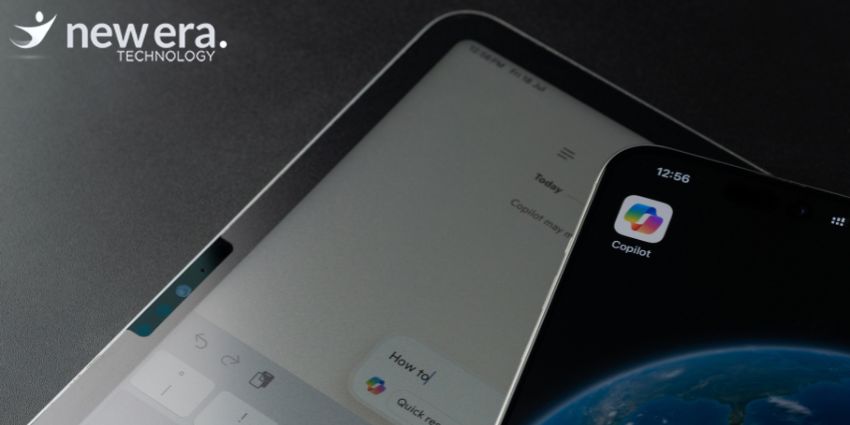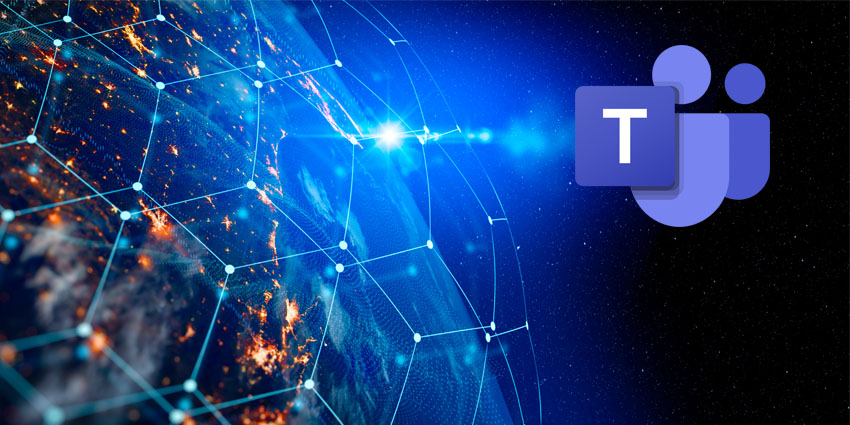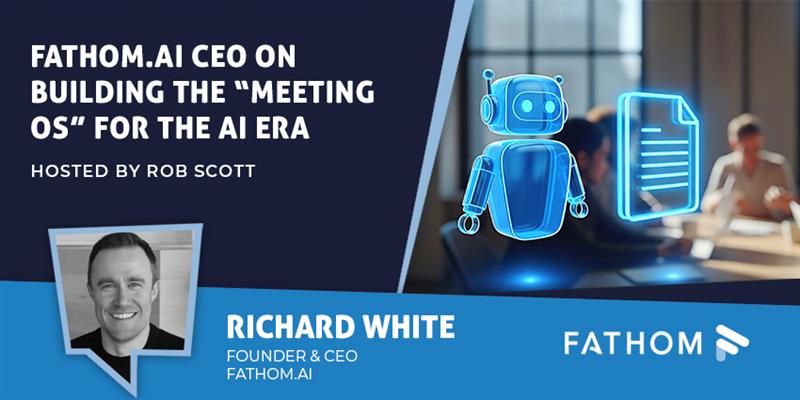For many companies, Microsoft Copilot represents one of the best ways to integrate AI into their workflow.
That’s because for organizations that use the full suite of Microsoft solutions—Teams, Outlook, 365—having a native Copilot that works across all these seems like a quick and simple turnkey solution to apply AI to as many places as possible.
Yet despite the compelling vision, many organizations struggle with adoption challenges preventing them from realizing Copilot’s full potential.
When considering seat costs, poor adoption across a large company can see thousands of dollars go down the drain monthly.
“When we talk about Copilot for Microsoft 365, it’s $30 per user per month. For thousands of seats, that’s a lot of money,” Steve Daly, Senior VP Solutions at New Era Technology, explained.
This gap between promise and practice reveals complex organizational, financial, and technical hurdles requiring strategic solutions.
However, organizations that successfully navigate Copilot adoption stand to gain substantial competitive advantage, with Forrester predicting Copilot ROI over three years of 116% for large enterprises and 132% to 353% for SMBs.
Yet the financial commitment to achieve such ROI requires an adoption strategy beyond simply purchasing licenses. One involves working with an integrator like New Era Technology who can eliminate initial adoption challenges and create a community around Copilot that reinforces itself over time.
The Triple Threat: Cost, ROI, and Culture
As with many new technologies, the most immediate barrier organizations face with Copilot adoption centers on cost justification. Unlike past software like CRM, justifying Copilot is more challenging.
“When CRM first released, it had a real use case: it’s going to make my sales more effective,” Daly said. “Copilot for Microsoft 365 is still kind of squishy in that its main purpose has not been defined.”
Such less-defined use makes it more ambiguous to identify ROI-generating activities. This complicates the justification for scaling, since it costs $360 per employee annually without a clear value proposition.
Beyond financial considerations lies a complex challenge: organizational literacy and change management. Widespread media attention of AI has created unrealistic expectations within enterprises.
“There’s so much media pressure that creates challenges around organizations really understanding what it does,” Daly noted. “You get fear of missing out, unrealistic timelines, insufficient budget, competing priorities – all snowballing.”
External and internal pressures often cause organizations to rush adoption without proper preparation. This can result in project abandonment or lack of stakeholder buy-in when initial high expectations are not met.
Such literacy gap extends beyond executives, however, to end users, who require substantial training and ongoing support to effectively leverage Copilot’s capabilities.
Because AI applications like Copilot seem intuitive, many companies are not putting in the same training as for other technologies. Yet organizations that underestimate training often see underperformance, with users piecemealing use or reverting to familiar workflows without AI.
The challenge therefore becomes ensuring people are not only enabled but actively using it and extracting measurable value.
From Internal Success to Client Impact
Being an AI integrator to organizations from SMBs to large enterprises, New Era Technology saw this pattern of Copilot adoption challenges was a consistent situation for numerous businesses. Therefore, it knew that its offering had to help companies scale this initial hurdle.
To tackle this, New Era Technology took a novel approach: using itself as a case study.
“This was important because we’re a Microsoft partner and customer zero to our clients,” Daly said. “We want to make sure we’re using it so we can tell those stories to our customers.”
Consequently, its approach to helping organizations in overcoming adoption challenges have emerged from its journey and strategies for implementing Copilot across the company.
Starting rollout, New Era Technology recognized that technology deployment alone wouldn’t guarantee success—they needed a comprehensive strategy for technical and human factors. New Era Technology established what Daly describes as constant communication channels:
“We have our change manager teams in constant communication with users. We honestly don’t give people time to not think about it.”
It created a structured support ecosystem including bi-weekly lunch and learns, regular communication about tips, and a center of excellence site as a living knowledge repository.
This not only established a culture of learning around AI but also created an infrastructure that preserved successes. This allowed the company to build upon its use internally, even after initial adoption or if AI-proficient staff left.
Now the infrastructure was in place, New Era Technology set about working on the second biggest issue: engagement. To do this, the integrator made sure AI use was continually discussed, learning ongoing, interaction with the technology rewarding. New Era Technology did this through gamification: “I borrowed it from Microsoft. We call it the Copilot Cup,” Daly explained. “We have things for people to do, like treasure hunts and usage ideas, awarding points and a weekly winner.”
This turned routine use into competitive engagement, maintaining momentum beyond launch excitement.
All these efforts meant by mid-June, New Era Technology completed their 300-user rollout. Yet they did not declare victory—they continued to support the infrastructure and culture around Copilot and its use.
The internal success now forms the foundation of New Era Technology’s Intelligent Adoption Framework—a four-phase method addressing adoption challenges.
The framework treats Copilot adoption as a software implementation requiring enterprise-grade rigor.
“Yeah, it’s a new cool thing, but it’s software,” Daly said. “We always try to solve business problems with technology.”
This helps apply proven change management practices while accounting for AI’s unique aspects.
Equally, as a Microsoft partner, New Era Technology’s approach integrates Copilot across the Microsoft ecosystem to maximize adoption.
This is increasingly important as Microsoft announces that it’s going through the biggest transformation in its 50-year history, with that transformation seeing AI further work across the whole product suite.
Entering a New Era of Copilot Use
Organizations that succeed in Copilot adoption unlock advantages beyond productivity.
They build AI literacy, establish change processes, and foster continuous learning cultures to independently leverage future AI innovations.
The main barrier to this is initial adoption. Yet early solvers gain first-mover advantages. Daly explains:
“If you’re not using it, your competitors are. Some upstart will be using it, changing things significantly.”
The window for AI-driven competitive advantage is, as a result, finite, making timely, rigorous adoption urgent.
Organizations treating Copilot like any enterprise technology deployment—supported by strong change management and user enablement—can achieve gains justifying investment. For those ready, tools, frameworks, and expertise exist. Partnering with integrators like New Era Technology builds that solid base for you to continue with Copilot success.







